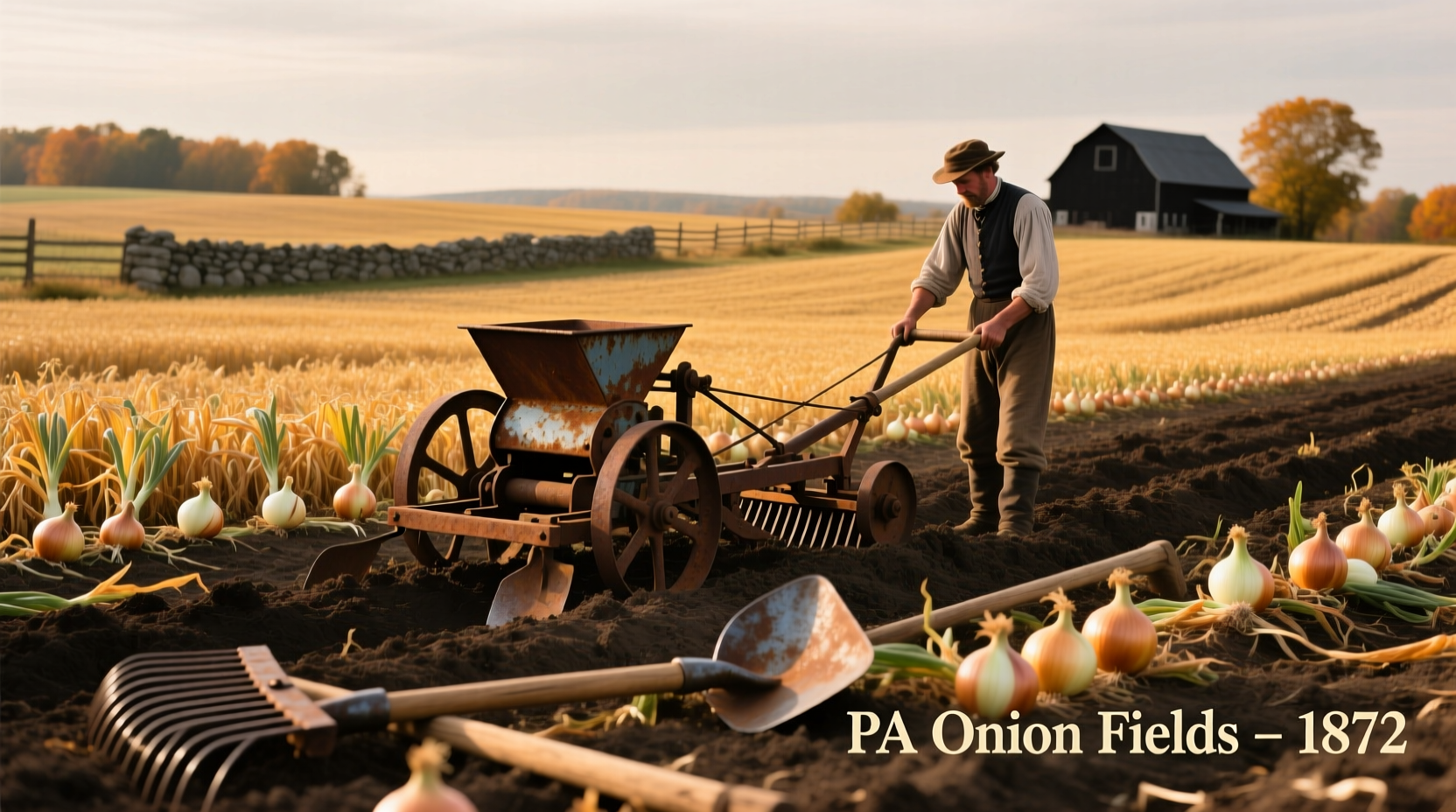When you search for ‘onion town,’ you’re likely seeking the real-world location behind this evocative agricultural nickname. Unlike fictional portrayals, Oniontown represents a fascinating case study in how crop specialization shapes community identity. This deep dive reveals why certain regions become synonymous with specific produce—and what happens when those agricultural traditions evolve.
The Origin Story: How One Neighborhood Earned Its Name
Oniontown isn’t a standalone municipality but a distinct neighborhood within Summit Township, Erie County, Pennsylvania. Its story begins in 1842 when German immigrant farmers recognized the area’s unique soil composition—a rich, sandy loam perfect for cultivating Spanish onions. Within two decades, these settlers transformed 500 acres into what became Pennsylvania’s largest onion-producing region.
Onion Farming Evolution in Northwestern Pennsylvania
- 1842: German immigrants establish first commercial onion plots
- 1860s: Production peaks at 100,000 bushels annually, shipped via Lake Erie
- 1890: “Oniontown” officially appears on postal records
- 1920s: Industrial farming shifts to California; local production declines
- Present: 3 remaining family farms maintain heritage varieties
Why This Soil Created an Onion Empire
The region’s success wasn’t accidental. USDA soil surveys confirm the area’s Erie silt loam possesses ideal drainage characteristics for bulb development. Unlike clay-heavy soils that cause rot, or sandy soils requiring excessive irrigation, this natural composition allowed onions to develop dense, flavorful bulbs with exceptional storage capability—critical before refrigeration.
| Onion-Producing Region | Annual Yield (Peak) | Distinctive Variety | Current Status |
|---|---|---|---|
| Oniontown, PA | 100,000 bushels | Erie Spanish | 3 heritage farms |
| Vidalia, GA | 2,000,000+ bags | Vidalia Sweet | Federally protected |
| Arnett, OK | 500,000 bags | Candy Hybrid | Declining industry |
Practical Considerations for Modern Onion Cultivation
While Oniontown’s commercial dominance has faded, its legacy offers valuable lessons for contemporary growers. Successful onion farming requires specific environmental conditions that explain why certain regions thrive while others struggle:
- Climate Constraints: Needs 100+ frost-free days with consistent moisture (unlike arid regions requiring irrigation)
- Soil pH Balance: Thrives in 6.0-6.8 range; alkaline soils produce bitter bulbs
- Daylight Sensitivity: Long-day varieties (like those in PA) won’t bulb properly below 35°N latitude
- Market Timing: Early harvests command premium prices but risk spoilage without proper curing
Experiencing Oniontown Today
Visitors seeking authentic agricultural heritage will find subtle nods to the area’s past. While commercial fields have given way to suburban development, the Erie County Historical Society preserves original farming implements, and three family operations still grow heritage varieties using traditional methods. The annual Erie Farmers Market features “Oniontown Onions” during August harvest season—recognizable by their distinctive copper skins and sweet flavor profile.

Why Other ‘Onion Towns’ Don’t Match the Authenticity
Several locations claim onion-related nicknames, but lack Oniontown’s documented agricultural legacy:
- Chicago’s ‘Onion City’ Myth: A misinterpretation of early settler’s ‘skunk cabbage’ references
- Vidalia, GA’s Protected Status: Legally designated for sweet onions but never called ‘Onion Town’
- Fictional References: TV shows like ‘Gilmore Girls’ invented ‘Onion Town’ as a plot device
True agricultural heritage requires verifiable production history—something only Pennsylvania’s Oniontown possesses through tax records, shipping manifests, and agricultural censuses dating to the 1840s.
Planning Your Visit: What to Know Before You Go
For those interested in experiencing this living agricultural history:
- Best Time to Visit: Late July through August during harvest season
- Key Locations: Summit Township Historical Marker (I-90 Exit 22), Erie County Fairgrounds
- Authentic Products: Look for “Erie Spanish” labeled at Erie Farmers Market stalls
- Preservation Efforts: Support the Heritage Landscape Conservancy’s work preserving remaining farmland











 浙公网安备
33010002000092号
浙公网安备
33010002000092号 浙B2-20120091-4
浙B2-20120091-4